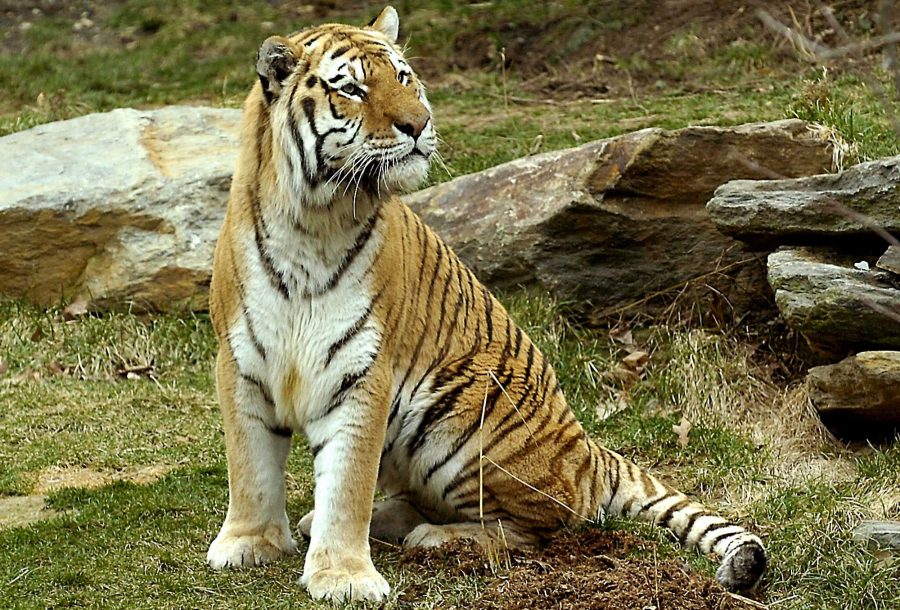Rare species of tiger critically endangered
A 12-year-old Amur tiger, Dmitri, looks perplexed at his mate, Kira, when they met through the outdoor mesh in the Bank of America Big Cat Falls habitat at the Philadelphia Zoo in Philadelphia, Pennsylvania. (Sharon Gekoski-Kimmel/Philadephia Inquirer/MCT)
October 29, 2015
The tiger is one of the most well-known animals in the world, recognized as a fierce and dangerous predator. But a specific breed, the Amur tiger, is currently critically endangered and has been nearly driven to extinction.
The Amur tiger is a subspecies of the tiger and the largest cat in the world. They average at about 11 feet in length with 3 foot-long tails. Males can weigh up to 700 pounds while females weigh about 400 pounds.
Amur tigers once thrived throughout the Russian far east, northern China, and the Korean peninsula, but were driven to the brink of extinction in the 1940s. Due to overhunting and poaching, only 40 individuals were left remaining in the wild.
The population began to grow again when Russia became the first country to grant the tiger full protection rights. By the 1980s, the Amur tiger population increased to around 500. However, after the collapse of the Soviet Union, the issue of poaching increased.
Conservation and wildlife organizations such as the World Wildlife Fund, helped to combat the issue and keep the population stable at around 450 tigers. The Amur tiger’s habitat is now restricted to the Sikhote-Alin mountain range in far-east Russia.
Joerns Fickel, from the Institute for Zoo and Wildlife Research in Berlin, Germany said, “It was a significant step in the right direction” but pointed out that safeguarding such a large area from poachers would be difficult.
Smaller populations of Amur tigers have also been known to live along the borders of northern China and North Korea. In an attempt to help repopulate the species, national parks are being created specifically for the species.
Wildlife Conservation Society deputy director for Asia Peter Zahler said, “The creation of this park greatly increases the amount of land protecting critical populations of two of the world’s big cats, and it will go a long way to securing their future.”
To save the Amur Tiger will require ongoing efforts by conservationists and wildlife organizations around the world.
Zahler said, “We look forward to continuing to provide whatever support is requested to help conserve tigers and leopards in the region.”
X-X-X
Christine Macke







